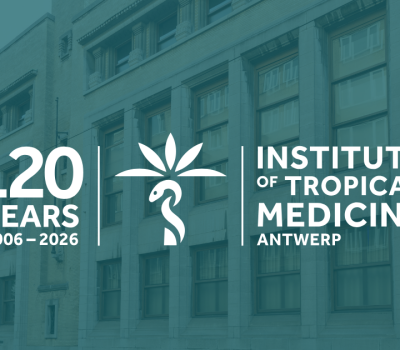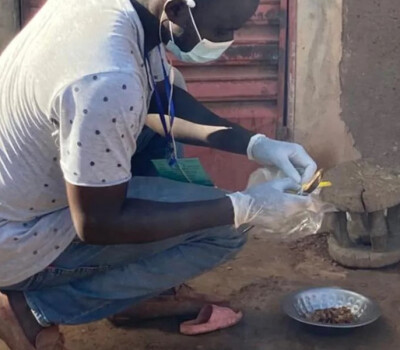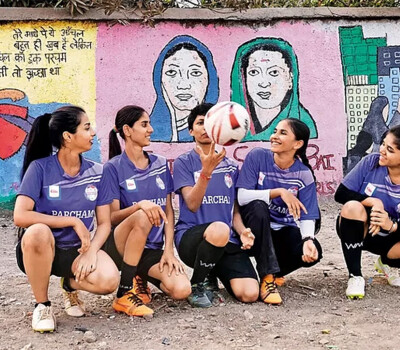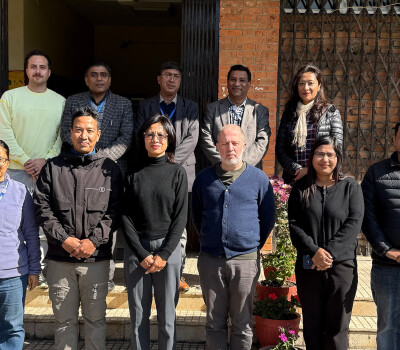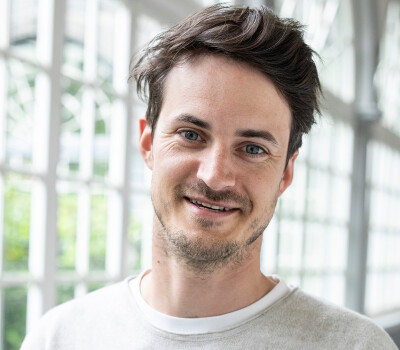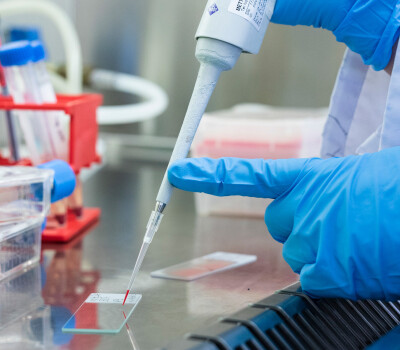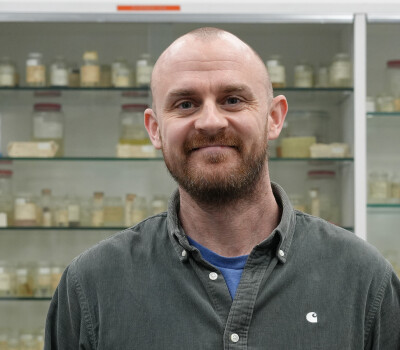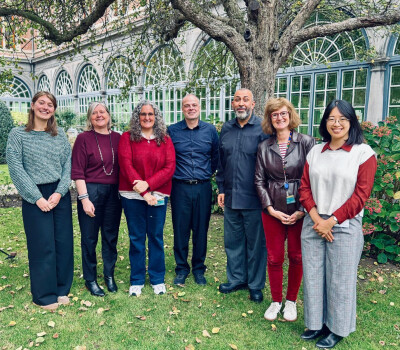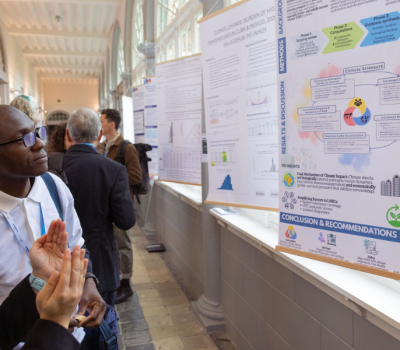Flying in the time of Ebola
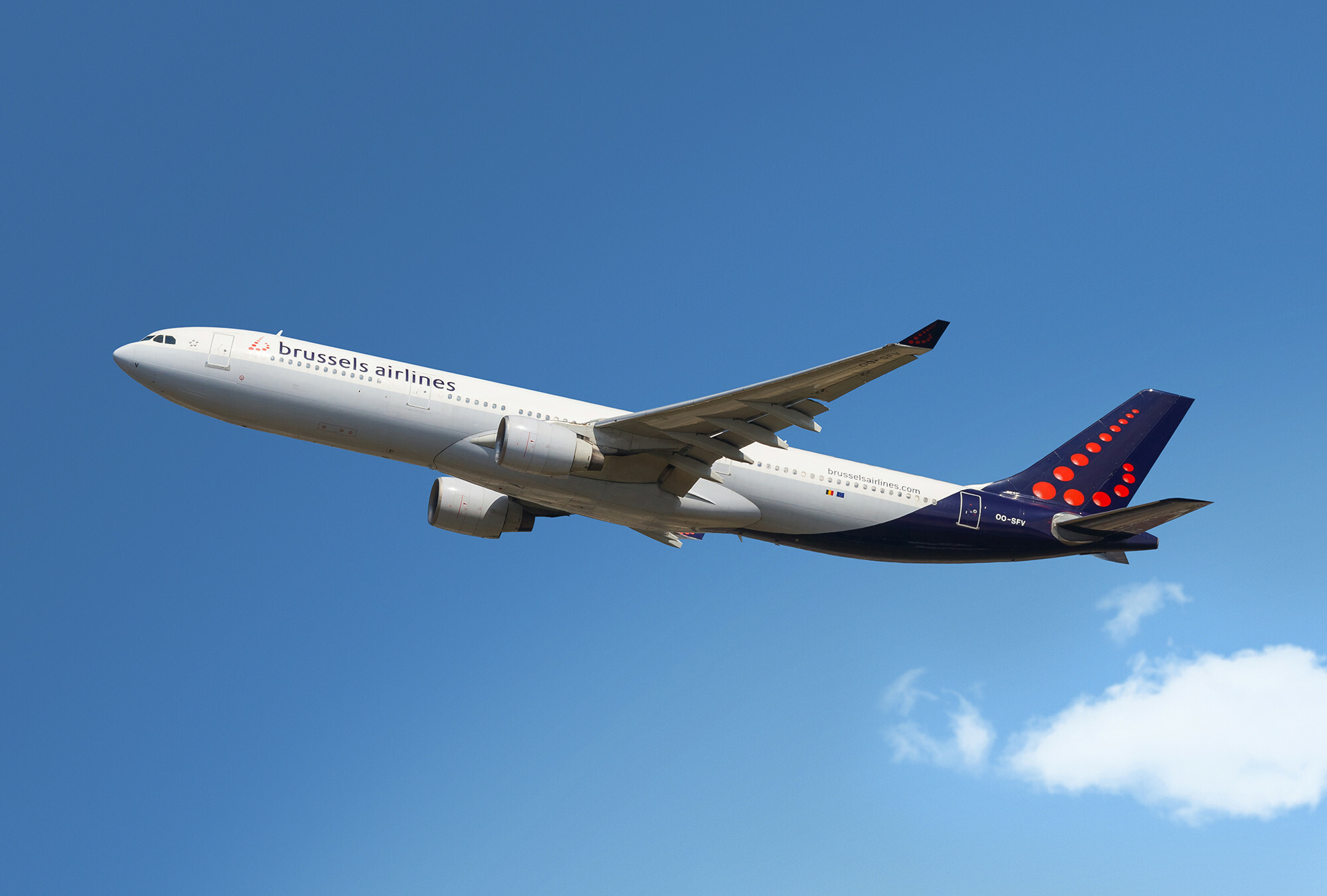
In late 2014, on a flight out of Brussels Airport, I was seated next to a charming French lady who was all smiles and "Bonjour" when taking her seat. Satisfied that the old lady was probably not going to turn out to be a homicidal maniac, I took my nap. You can imagine my surprise when I woke up, only to find that the lady was now wearing a face mask. For a brief moment, I was confused had there been some sort of emergency that had been declared while I was sleeping, and didn't that usually call for oxygen masks and not a health hazard mask?
Looking around me and noticing that no one else seemed to be wearing a mask and reassured by the stability of the plane which appeared to still be high above ground level or cloud level for that matter, I was even more confused. Why then was the lady wearing a mask?
Now, there are two things that you must understand. First, this was right around the time that there had been two cases of Ebola reported in Europe. And second, I was – as far as I could see – one of only three black people on the plane.
Staring outside the window, I couldn't help but wonder could it be that she thought I was from one of the affected Western African countries and that – just by being seated next to her – I was a possible health risk?
To be honest, I didn't blame her. Ebola was on everyone's mind and more so, since the flaws in protective and screening measures were being exposed almost every day, resulting in the threat appearing to be closer to home for just about every man or woman on the globe. If you had told me, you were from an Ebola affected country in West Africa, I too would have been cautious and would have been nervously scanning the exits.
However, I wasn't from the affected countries, and I wasn't even travelling from Africa; I was doing my medical school elective period and working as a journalist in residence at the Institute of Tropical Medicine, which is at the forefront of research in tropical diseases, and it was located in Antwerp, Belgium.
But here is the odd thing. I may have been in Belgium (by then, for about three weeks) but that did not mean that Ebola was a far-off plague for me. For there is an intimate link between Ebola and ITM where I was studying at the time.
First, Ebola was discovered (i.e., identified from blood samples) at ITM, by a team that included the legendary research scientist, Dr. Peter Piot who is now at the London School of Hygiene and Tropical Medicine.
But that is not all. At ITM we had top biomedical researchers who were routinely volunteering to work in the three West African countries most affected by Ebola – Liberia, Sierra Leone, and Guinea, mostly with Médecins Sans Frontiers.
Barely a day passed but I heard of someone who was ‘just back from West Africa’ – and this would be a person who did not in the least appear to be “back from the very jaws of death” as many might imagine. They were not making a fuss about it. They were just going about their routine business, working as usual.
The point is these were top biomedical researchers who knew what Ebola really was; how to protect themselves from getting infected; and who returned to Antwerp having not the least doubt that they would not be putting their colleagues who worked closely with them at risk.
And I must add that Brussels Airlines was one of the very few which did not abandon the West African route owing to this public health crisis. Right through the worst of the Ebola outbreak, Brussels Airlines kept flying in and out of all three affected West Africa countries; Sierra Leone (Lungi Airport), Liberia (Robertsville Airport) and Guinea (Conakry Airport). They thus established a crucial air-bridge to the outside world, making it possible for equipment as well as volunteers to be flown out to help fight this deadly virus which had by then completely overwhelmed the public health infrastructure of the three nations. Furthermore, the first batch of the GSK Ebola candidate vaccine was shipped aboard one of the airlines cargo planes.
But back to the charming French lady in the seat next to me: how was I to let her know that she need not cower in terror at the thought that I might infect her?
For you see, my knowledge of Français might have been extensive covering 'Bonjour', 'ça va' and even an occasional 'oui' here and there, but it didn't include descriptive medical terminology. It was then that it occurred to me that perhaps, the first step should be to ask why she was wearing a mask. She just might have allergies. She did. And for the next half an hour, she went on to explain that ever since she was a little girl she had been 'afraid of germs' and she was diagnosed with Mysophobia.
It had resulted in her obsessive-compulsive disorder, but she had managed to work through it in the course of time and she was happy to report she was 'recovering'. But whenever she flew, she just had to wear a face mask. I went on to relate to her my concern and she laughed. I was relieved that I was saved the effort of looking for the map of Africa highlighting the countries affected by Ebola just to prove that it wasn't the entire continent.
After landing, she took off her mask, hugged me and whispered, "There are much worse things than Ebola chérie and some have been here longer."
Author: Diana Wangari Gitau from Kenya, ITM's 2014 journalist-in-residence
Spread the word! Share this story on
